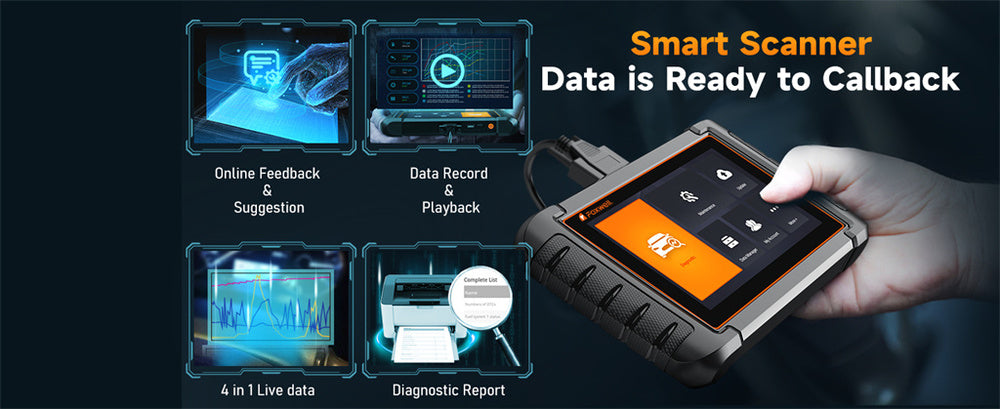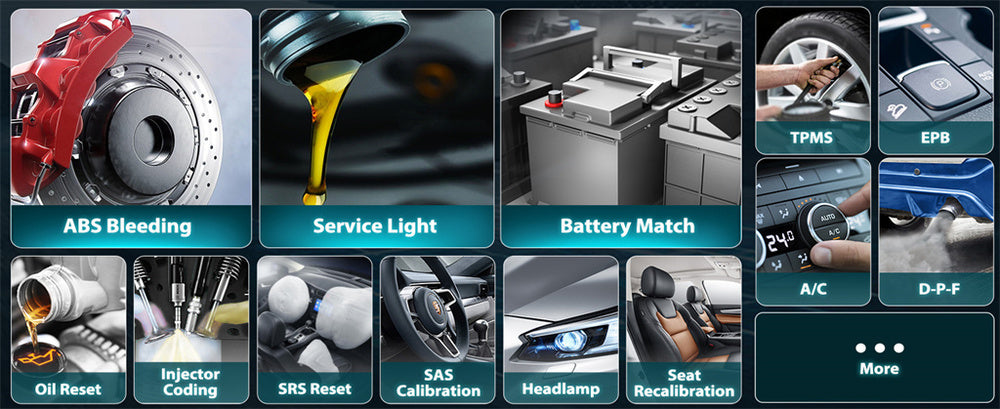Proper engine timing is vital to keeping your vehicle in top shape, so if you're wondering whether an OBD2 scanner can help, the answer is yes.
We will take you step by step through this process—connecting the scanner, interpreting its data, adjusting your timing as necessary, and finally revamping as needed—so by the end, you will have a comprehensive knowledge of this helpful tool for keeping your engine healthy!
Why Use an OBD2 Scanner for Timing?

You might be asking why an OBD2 scanner would be beneficial when checking engine timing, but I assure you, it is one of the simplest and fastest methods available. First off, an OBD2 scanner is extremely convenient compared to traditional methods, which involve gathering together various tools, taking time, or both; they just plug in, providing all the data you require instantly!
One of the chief advantages of scanners is accuracy. Reading data directly from your car's computer provides precise insight into engine performance. This beats trying to "eyeball" things using timing lights or manual tools, which may sometimes provide inaccurate readings if you lack experience.
OBD2 scanners make troubleshooting simple. You will no longer spend hours fiddling around with different parts, as once connected, it only takes minutes to obtain all the readings that matter. This is perfect if you want to perform routine maintenance checks without creating too much extra work for yourself!
OBD2 scanners are user-friendly; even non-car enthusiasts can quickly become adept with them. Most scanners come with clear instructions, and some even feature apps to guide you through the process on your smartphone - making OBD2 scanners accessible for anyone interested in DIY projects or looking to reduce mechanic costs.
An OBD2 scanner for engine timing checks is an accurate, efficient, and modern way of keeping your car in tip-top shape. It brings precision professional equipment right into your garage, making taking care of your vehicle easier than ever!
Getting Started
Before diving in and checking your engine's timing, you must accomplish some preliminary tasks first. First, make sure your OBD2 scanner is compatible with your vehicle; most modern cars should have one; otherwise, refer to your manual for guidance if in doubt.
Once you have your scanner, ensure your vehicle is on a level surface with its engine switched off for safety. This ensures accurate readings while providing you with a stable work area—plus, it makes the whole process smoother!
Tip: Before getting started, check that your scanner is fully charged or equipped with new batteries—nothing could be more frustrating than beginning an analysis and having your scanner run out of power in the middle. Also, keep your vehicle's service manual handy, as this can provide specific instructions and details that might come in handy during troubleshooting.
So, gather your OBD2 scanner, park your car on a level surface, switch off its engine, and double-check its battery. With these simple preparations, you'll ensure a successful and efficient timing check! Now, it's time to connect that scanner and get readings!
Connecting Your OBD2 Scanner
Once you've purchased and connected an OBD2 scanner, let's connect it. The first step will be locating the port—typically under the dashboard on the driver's side but sometimes hidden behind a cover, so be on the lookout.
Once you've located a port, take your Foxwell NT809TS (or another OBD2 scanner) and plug it in. When connected correctly, you should feel it click into place! The next step is to turn your ignition on without starting the engine—this will power up the scanner.
With the Foxwell NT809TS, a menu will appear on your screen. While it should be pretty user-friendly, its accompanying manual is helpful. Navigate through its various sections until you find "Engine" or "Powertrain." Once there, locate RPM (revolutions per minute) and Ignition Timing Advance readings for the #1 cylinder, which serve as readings to check timing accurately.
Foxwell NT809TS is an ideal way to display and save readings, making comparisons over time or sharing data with a mechanic easier. Once the data has been shown on your screen, its interpretation becomes the next step.
Connecting an OBD2 scanner is simple: find the port, plug in your scanner, turn on your car's ignition, and navigate to the appropriate menus - like with Foxwell NT809TS's tool, you will have all the information at your fingertips!
Access Timing Data
Once your scanner is connected and powered on, it's time to get down to business: accessing timing data. In particular, find RPM readings and Ignition Timing Advance for the #1 Cylinder on Foxwell NT809TS by browsing its menu until you locate "Engine" or "Powertrain."
Once there, look for the live data option. Here, you will receive real-time information regarding your engine's performance, and its RPM reading will indicate its speed. This information can help with timing adjustments that must be performed while it reaches specific RPM values.
Find your Ignition Timing Advance reading next. This indicates the angle at which a spark plug fires prior to the piston reaching the top of the compression stroke—in other words, when the fuel-air mixture ignites to make your engine run smoothly and is ignited by the spark plug. These two pieces of information are critical when checking timing.
Foxwell NT809TS displays readings clearly and saves data for future reference - perfect if you need to monitor changes over time or share this information with your mechanic.
To wrap up this part, accurately check and adjust your engine's timing, and use your scanner's menu to locate RPM and ignition timing. Advance readings will be essential metrics in gauging its timing performance.
Interpreting Your Data
Once you have your data, the next step should be interpreting those numbers. RPM readings gauge engine speed, typically measured in revolutions per minute. Most vehicles have an optimal RPM range where timing should be checked—normally 700-900 RPM when idle. Please consult your vehicle manual to find this out for sure.
Ignition Timing Advance can be tricky business. This reading indicates how far in advance of piston reaches the top of the stroke that the spark plug fires; if this number is inaccurate, it could indicate your engine has too advanced or too retarded a timing advance resulting in performance issues or damage over time.
Similarly, if the ignition timing in your manual calls for 10 degrees before top dead center (BTDC) at 800 RPM, but the scanner shows something different, you may need to adjust its timing.
Interpreting your readings accurately is vital, as incorrect timing can result in numerous problems ranging from low fuel economy to engine knocking. If in doubt, compare them against the specifications in your vehicle manual or consult a professional mechanic for assistance.
Align your RPM and Ignition Timing Advance readings with those specified for your vehicle. If they don't match up, make any necessary timing adjustments.
Adjusting Engine Timing
If your engine's timing is off, don't fret; it is still possible to make adjustments without being an expert mechanic. The first step should be identifying whether your engine has a distributor or uses another method, such as timing belts or chains; each has different adjustment processes that must be followed when making any necessary alterations to timing.
On vehicles equipped with distributors, adjusting timing typically involves loosening and rotating the distributor hold-down bolt while gradually increasing rotation speed until optimal timing results are achieved. When finished adjusting, check your scanner readings against these specifications to confirm.
Engines equipped with timing belts or chains typically require more complex repairs, including adjusting tension or repositioning the belt. These may necessitate consulting your service manual or hiring an outside mechanic.
Remind yourself to make small and precise adjustments. Each time after an adjustment, recheck the RPM and Ignition Timing Advance readings with your scanner to ensure you've made the appropriate changes.
The short version: Adjust your timing gradually and carefully, using an OBD2 scanner to confirm changes. If this seems daunting, seek assistance from a professional mechanic.
Common Issues and Troubleshooting
No matter how skilled your tools may be, unexpected issues and troubleshooting arise. One such hiccup is inaccurate readings—if your scanner isn't showing the right data, make sure it's properly connected and that your vehicle ignition switch is set correctly before unplugging and replugging in again, as this often solves the problem!
Another challenge could be having difficulty accessing the appropriate data on the scanner. If you're finding yourself lost among all its menus, consult your scanner's manual or look online for tutorials; there are plenty of resources out there to guide you step-by-step through this process.
If your scanner is still giving you issues, it could be related to either your vehicle's OBD2 port or the scanner itself; in such a situation, testing out different models or consulting a mechanic might be beneficial. Also, keep an eye on how strong your battery is; poor conditions could be the source of connection issues.
If your engine's timing is significantly off and simple adjustments don't fix it, this could indicate more severe engine issues. Seeking professional assistance would be best as they can diagnose complex problems beyond simple timing issues.
If you experience any issues, double-check all connections, consult the manual, and seek professional assistance if necessary. Troubleshooting is part of the process; with patience and persistence, you will likely resolve it successfully.
Tips for Accurate Timing Checks
To achieve accurate timing checks, here are a few key pointers to keep in mind. First, conduct the timing check when the engine has reached its normal operating temperature. Cold engines can give misleading readings, so allow your car to run a bit before conducting your timing test.
Another tip for conducting the check effectively is ensuring it takes place in an ideal environment. Avoid windy or boisterous places that might interfere with readings or cause you to become distracted; opt instead for quiet, peaceful places that allow you to focus and provide accurate data.
Regular maintenance is equally essential. To ensure maximum accuracy during timing checks, keep track of your spark plugs, timing belts, and related components - such as spark plugs and timing belts - and ensure they are in good shape by regularly inspecting spark plugs, timing belts, and any associated parts. Worn-out components can impede engine performance while throwing off timing readings, so keeping up with regular checks guarantees accurate readings every time!
Use a scanner that enables you to save and compare data over time for maximum efficiency. This will allow you to track changes in engine performance over time and catch potential issues early. For instance, Foxwell NT809TS allows users to store readings, which could prove invaluable in long-term maintenance tasks.
Before making any adjustments, always double-check your readings. Misinterpretations are easy when working quickly, so take the time to ensure everything matches your vehicle's specifications and is accurate.
Following these tips will allow for accurate timing checks that keep your engine running smoothly.

Conclusion
Utilizing an OBD2 scanner to check your engine timing is a straightforward and effective solution, as outlined in this blog. By following its steps, you can ensure your engine runs efficiently. Regular timing checks are an essential component of vehicle maintenance that can prevent further issues later.
FAQs
What is an OBD2 scanner?
An OBD2 scanner is a tool that reads diagnostic trouble codes from a vehicle's onboard computer.
Can an OBD2 scanner check engine timing?
Yes, an OBD2 scanner can help you monitor engine timing and other critical parameters.
How do I use an OBD2 scanner for timing?
Plug the scanner into the OBD2 port, follow the instructions to access timing data, and interpret the results.




Leave a comment
This site is protected by hCaptcha and the hCaptcha Privacy Policy and Terms of Service apply.